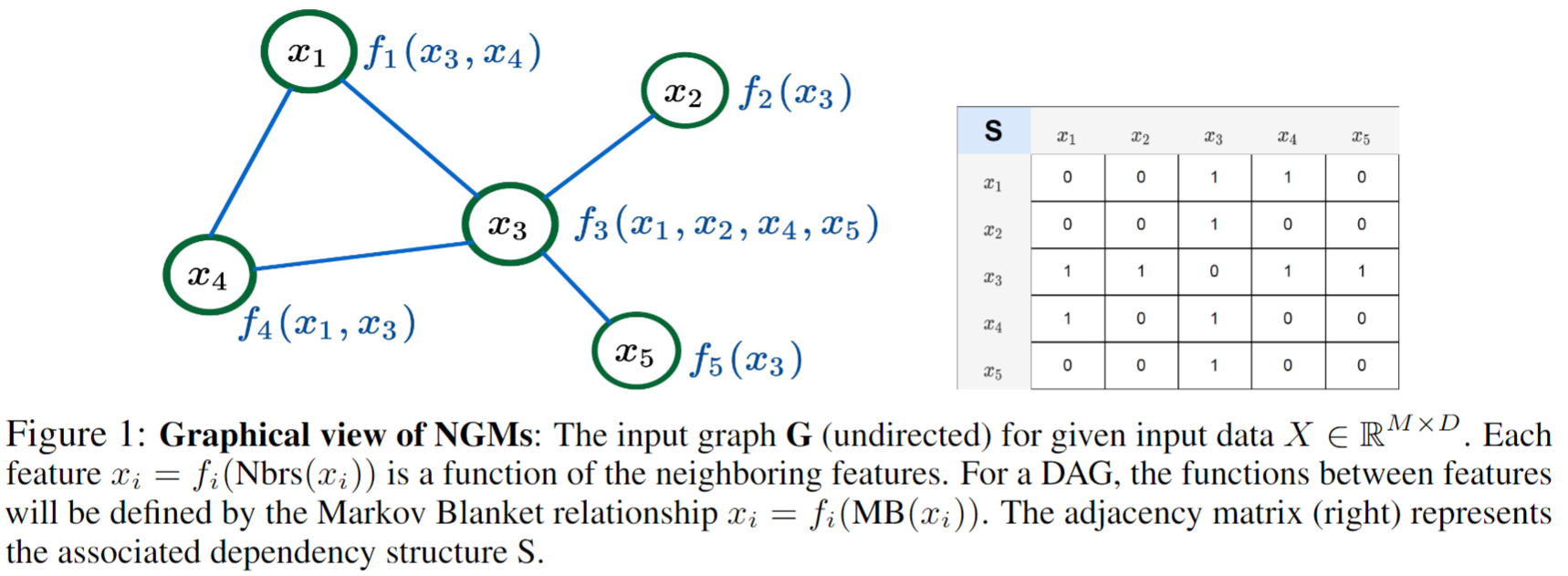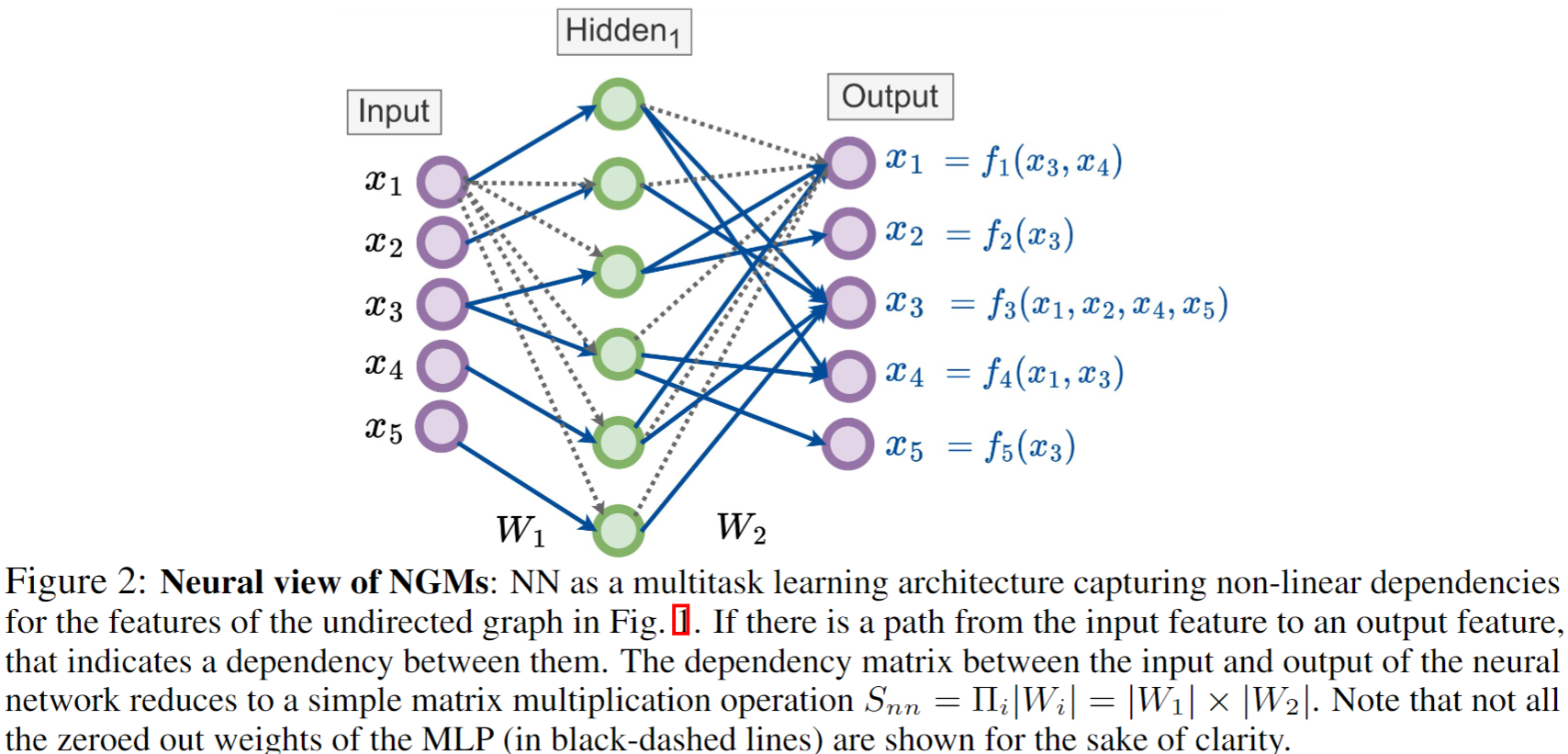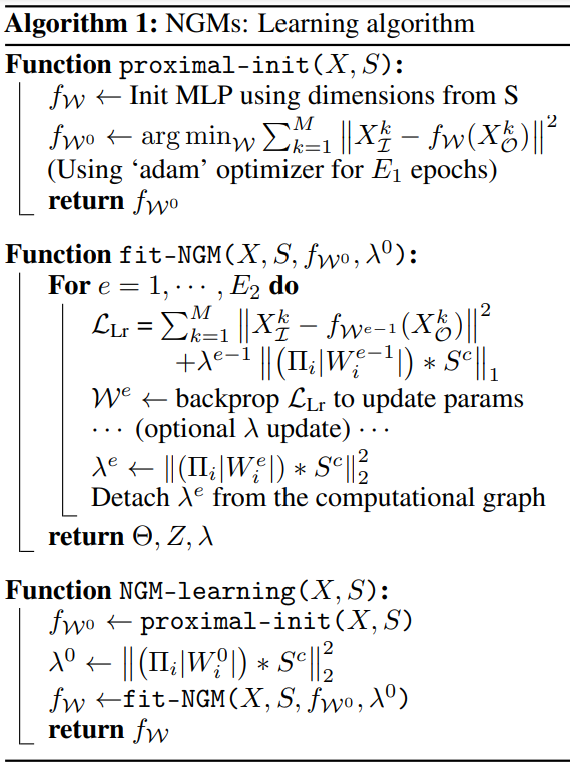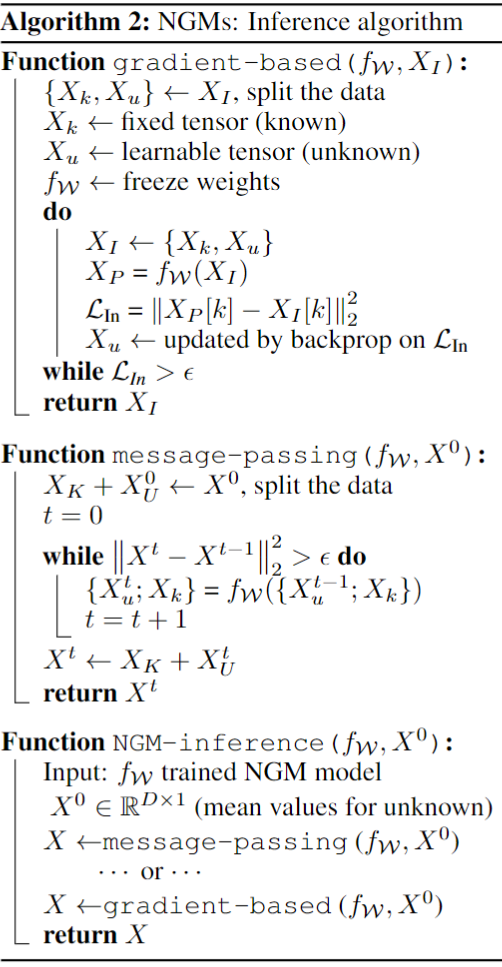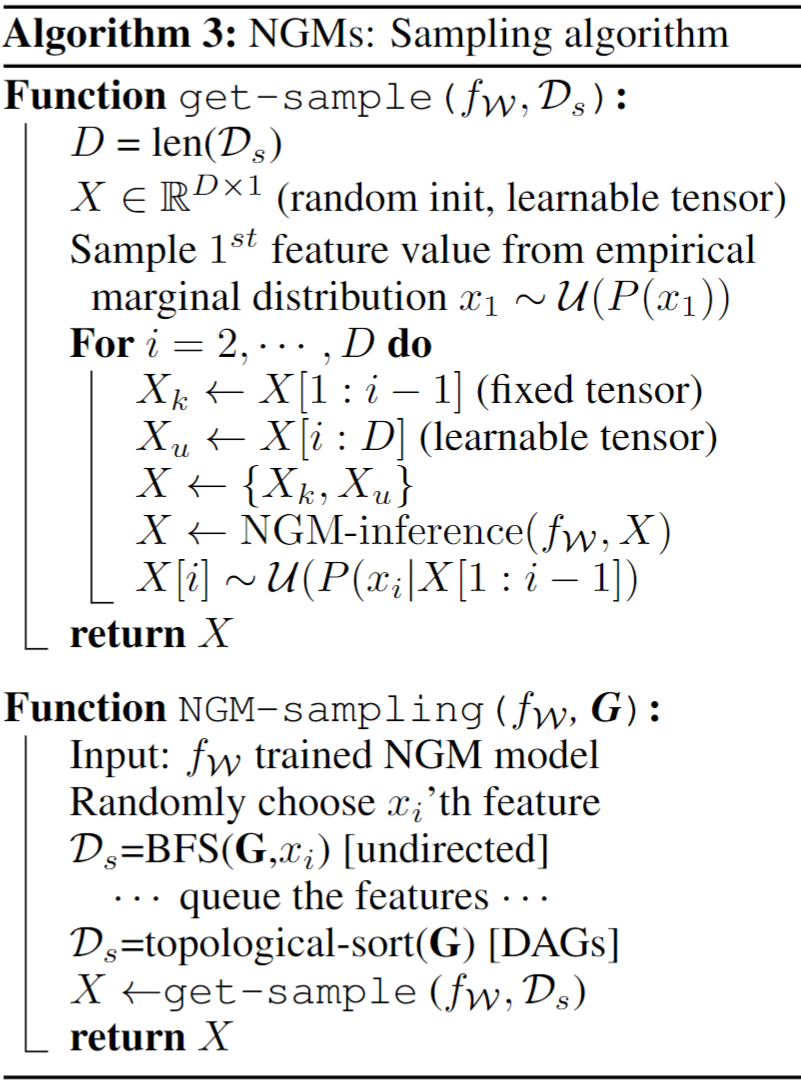Neural Graphical Models (NGMs) attempt to represent complex feature dependencies with reasonable computational costs. Specifically, given a graph, we capture the dependency structure between the features along with their complex function representations by using neural networks as a multi-task learning framework. We provide efficient learning, inference and sampling algorithms for NGMs. Moreover, NGMs can fit generic graph structures including directed, undirected and mixed-edge graphs as well as support mixed input data types.
Key benefits & features:
- Facilitate rich representations of complex underlying distributions.
- Support various relationship types including directed, undirected, mixed-edge graphs.
- Fast and efficient algorithms for learning, inference and sampling.
- Direct access to the learned underlying distributions for analysis.
- Handle different input data types like categorical, images & generic embedding representations.
- Fast and scalable, supports batch learning with GPU support.
The setup.sh file contains the complete procedure of creating a conda environment to run mGLAD model. run bash setup.sh
In case of dependencies conflict, one can alternatively use this command conda env create --name ngm --file=environment.yml.
A minimalist working example of NGMs is given in demo_NGMs.ipynb. It is a good entry point to understand the code structure as well as NGMs.
If you find this method useful, kindly cite the following associated papers:
Neural Graphical Models: arxiv
@article{shrivastava2022neural,
title={Neural Graphical Models},
author={Shrivastava, Harsh and Chajewska, Urszula},
journal={arXiv preprint arXiv:2210.00453},
year={2022}
}
uGLAD: Sparse graph recovery by optimizing deep unrolled networks. arxiv
@inproceedings{
shrivastava2022a,
title={A deep learning approach to recover conditional independence graphs},
author={Harsh Shrivastava and Urszula Chajewska and Robin Abraham and Xinshi Chen},
booktitle={NeurIPS 2022 Workshop: New Frontiers in Graph Learning},
year={2022},
url={https://openreview.net/forum?id=kEwzoI3Am4c}
}
